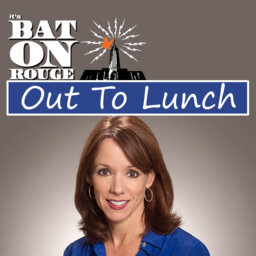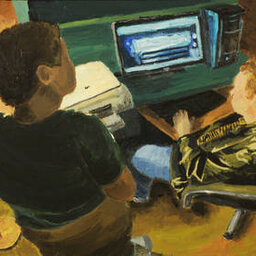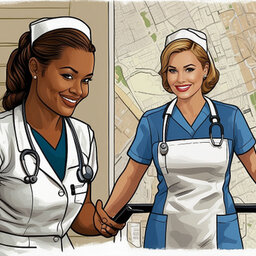Doctors and Digital Distancing
"Everything is changing" is a phrase we don't get to use often about describing society. But living through 2020 we know it's pretty accurate right now. Things that were simple and fundamental, like going to the doctor and interacting with co-workers, are no longer so simple. On this edition of Out to Lunch we're looking at changes in how we visit doctors and digital distancing.
Digital Distancing
How’s the social distancing going? Are you managing to keep 6 feet away from everybody else? How do you figure out what 6 feet is? We’ve heard people describe it as the length of two supermarket shopping carts, or the same height as Drew Brees, if you can imagine Drew lying on the ground in front of you.
If you’re looking for a more reliable measure, a Baton Rouge company, Enginuity Global, has a digital solution. It’s called the Proxxi Halo. It's a wristband that buzzes when you’re within 6 feet of someone. If you’re saying, “Wait, what?” - they’ve already sold tens of thousands of these wristbands, at $100 each.
Dan Ducote is the owner and Managing Member of Enginuity Global.
if you’re working with other people in industry, in construction, on a factory floor, or even in school, it’s now become vitally important to know what six feet looks like. Getting within six feet of another person greatly increases the chances of catching or spreading Covid 19. Once someone in the workplace or at school tests positive for Covid 19, and you have no idea what parts of the building they’ve been in or who they’ve been in contact with, the whole place has to shut down while it’s cleaned, and everybody has to get tested. So it’s vital – not just for health, but for keeping businesses open – that we know what 6 feet looks like and have a contact-traceable record of where an infected person has been while contagious. And that's why the Proxxi Halo is taking the workplace market by storm.
Doctors
This has probably happened to you. You go to your doctor, and she refers you to another doctor. A specialist. Do you know how your doctor decides who to refer you to? You might be surprised to learn that there is no established method. It’s more or less like recommending a restaurant.
When someone recommends a restaurant to you, it’s usually because they’ve been to the restaurant. But when your doctor recommends you go see a mental or behavioral health professional – like a psychiatrist or therapist - there’s a very good chance your doctor has never actually seen this person professionally herself. So, what is your doctor basing this recommendation on? Maybe the therapist is someone your doctor knows personally. Or maybe she’s heard good reports from other patients.
Don’t you think there ought to be a better way for medical professionals to find and refer each other? That’s what Trevor Colhoun thought too.
Trevor’s company, Trusted Provider Network, transforms medical referrals and recommendations into a more medically sound and logical system. Trusted Provider Network is not for consumer recommendations. It’s not like a medical Yelp. It’s for medical professionals only. But it’s not LinkedIn or Facebook for doctors.
There's more discussion about alternative healthcare models here.
Photos from this show by Jill Lafleur are at our website.
 It's Baton Rouge: Out to Lunch
It's Baton Rouge: Out to Lunch


